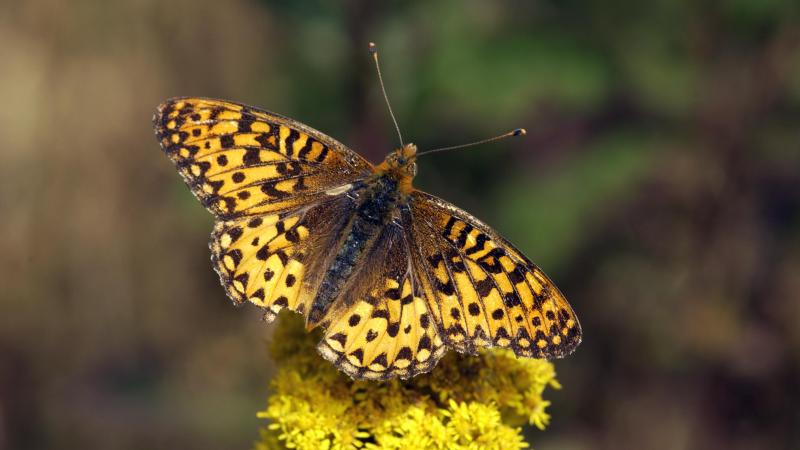Oregon silverspot butterfly

The Oregon silverspot butterfly (Speryeria zerene hippolyta) inhabits coastal grasslands near the Pacific Ocean and relies on a single plant - the early blue violet - to complete its life cycle. Once common on the Oregon Coast, this butterfly was reduced to four Oregon populations by the 1990s.
The species was listed as threatened by the U.S. Fish and Wildlife Service in 1980; one of two Oregon butterflies listed as threatened or endangered under the U.S. Endangered Species Act. Oregon silverspot populations have declined due to habitat loss and degradation. Development of coastal headlands, fire suppression, grazing and the invasion of non-native plants have all contributed to this butterfly's decline. A population crash in 1998 prompted USFWS to begin a population supplementation program in partnership with the Oregon Zoo and the Woodland Park Zoo.
Once common on the Oregon Coast, the silverspot was reduced to four Oregon populations by the 1990s.
Oregon silverspot recovery
The Oregon Zoo works to save these beautiful pollinators from extinction with partners from the U.S. Fish and Wildlife Service, U.S. Forest Service, Oregon Parks and Recreation Department, Woodland Park Zoo, Oregon Department of Corrections-Coffee Creek Correctional Facility, Institute for Applied Ecology, The Nature Conservancy and Sequoia Park Zoo. Supplementing the wild populations with zoo-reared butterflies prevents extinction of existing populations and allows for the possibility of reintroducing butterflies to their former range.
What the recovery project looks like:
- Late summer: Conservation biologists in the field bring adult female butterflies to the zoo, where they lay eggs. The eggs are hatched in special jars to maintain humidity.
- Winter: The jars containing tiny caterpillars are placed in fridges to simulate winter on the Oregon Coast. During this phase, called diapause, the caterpillars are mostly inactive.
- Spring: Caterpillars are removed from their jars and fed with violet leaves. They grow rapidly through six instars (phases of molting) over a period of six to eight weeks. At the end of this time they pupate in preparation for metamorphosing into butterflies.
- Summer: Pupae are taken from the zoo and placed in protective release cages on the coast. Biologists watch them every day and when the butterflies "eclose" (emerge from their pupae cases), they are released to join free-flying wild butterflies.
- Fall: Host plants are planted in the butterfly habitat to provide food and nectar for caterpillars and butterflies in the future.
Successes and ongoing recovery work
About 2,000 butterflies are released each year at the Oregon Coast. In 2012, the Oregon Zoo and Woodland Park Zoo were awarded the AZA's North American Conservation Award for the cooperative Oregon silverspot recovery program. Recently, zoo staff have assisted field biologists to release silverspots near sites from which they’ve disappeared, including the Nestucca National Wildlife Refuge and three different areas on Saddle Mountain in the Oregon Coast Range.

